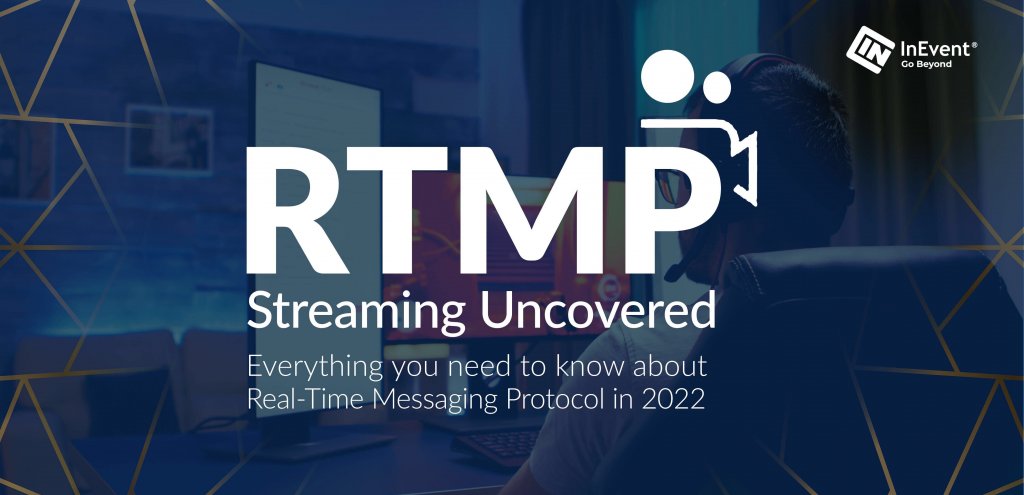RTMP Streaming explained – : Everything you need to know about Real-Time Messaging Protocol in 2022.
RTMP – It’s one thing to stream videos on-demand; it’s another to stream an event as it’s happening live. The latter propels FOMO (Fear of Missing Out) induced engagement. Viewers who cannot be present at the event’s location feel connected to the live stream as though they were experiencing the actions live. According to a Psychologist, Susan Weinschenk, live video creates an environment for instant reaction and feedback — an environment rich with dopamine.
A study by Facebook revealed that Facebook users comment ten times more on Live videos than on regular videos. Similarly, it was discovered that, on average, viewers are 3 times more likely to stream a live video than a video-on-demand. We could go on, and on highlighting the effect live videos have on views, but do you know the technology that enables the functionality of live videos? If your guess is RTMP, then you’re a genius!
Upon reading this post, you’ll better understand the nitty-gritty of RTMP and how you can set it up for your virtual & hybrid events and webinars.

What is RTMP?
RTMP is the short form of Real-Time Message Protocol, an organized streaming solution programmed to transmit live video and audio signals from an encoder to a host platform (server) across the internet. RTMP and be likened to a middle-man that enables exchange between two parties.
Think about how you stream live events on social media. What actually happens is that the video is connected to and primary streaming platform through an encoder. And then, the stream is broadcast on that social medium simultaneously.
What is an RTMP stream?
Now that you know what RTMP stands for and its function, you can link its relevance to live streaming. An RTMP stream is a live broadcast powered by the distribution of audio-video waves over the internet from an encoding platform like OBS Studio to a video streaming platform like InEvent.
RTMP streams produce low-latency audio-video transmission, a massive bonus for production teams for events and webinars that disseminate live action to a global audience. At the same time, RTMP streams provide adaptive-bitrate streaming with minimal buffering and the ability to rewind fast-forward videos, delivering a wholesome viewer experience.
Now that you know what RTMP does and how it enables live streaming, you need to learn the technical aspects, including setting up your RTMP. Further down this post, you’ll see how live streaming enabled by RTMP can boost your brand’s online presence and web traffic, and you’ll be a stone’s throw away from converting leads to paying customers.
Is RTMP still used?
Yes. RTMP encoders remain indispensable for many producers and event organizers because it’s a good substitute for watching live events as it works with low latency and enables multi-platform streaming.
Additionally, the pandemic triggered an increase in virtual streaming, which fuelled the need to connect guests who couldn’t be physically present at the event location due to social distancing guidelines.
RTMP streaming was the go-to solution for many live events with limited sitting capacity during the pandemic. As things return to normal, RTMP streaming remains an effective video transmission protocol for live broadcasts.
How do I set up my own RTMP?
Now that you know that RTMP is still relevant in modern times and you can create blockbuster streaming experiences that boost your brand’s image, it’s time to learn how to enable RTMP on the InEvent platform.
Your RTMP settings must be configured to ensure a seamless live stream. Be assured that you can plug-in software or hardware encoders to the InEvent platform.
Here’s a brief guide on how you can set up RTMP using the InEvent platform:
Connect Video Signals to an encoder
The first thing to do is connect the video signal to the RTMP hardware or software encoder. Connect your camera cord to the encoder SDI/HDMI cable unit if you’re using a hardware encoder. Also, some encoders connect to cameras via wifi. If you have such an encoder, all you need to do is to sync the RTMP hardware with your camera signal.
Connect encoder to an online streaming platform
If you’re using the InEvent platform, head over to your Agenda tab and click on the activity you wish to stream via encoder, then select RTMP streaming under the details tab.
Generate Stream Keys
You can create stream keys to connect to the encoder on your online streaming platform. On InEvent, you can easily spot the ‘Live stream using external software’ section, where you retrieve the stream keys that will be added to the encoder. Click the ‘view information’ button and copy and paste the stream key displayed on the pop-up window.
Select video settings
You need to decide the video and audio quality of your stream. You can choose your desired resolution, such as 720 x 480 (standard definition) or 1920 x 1080 (full HD).
Go live!
Congrats! You have completed the technical stages. All that’s left for you is to copy your video player over to the web pages or social media platforms you want your streams to appear on. All that’s left for you is to press the ‘start streaming’ button.
RTMP vs. RTSP: What’s different between the two?
RTSP is known as ‘Real-Time Streaming Protocol,’ It’s another protocol used for streaming live videos. The underlying difference between RTMP and RTSP is the functions they perform to enable live streaming.
RTMP transmits the audio-video signals from the encoder to the streaming platform, while RTSP is responsible for how the viewers interact with the streaming platform. Simply put, it controls the ‘pause,’ ‘play.’ ‘fastforward’ commands that the viewers make. Though they perform different roles, their functions are quite important for live streaming.
Conclusion
There’s so much to learn about RTMP and its components (more technical stuff), but all you need is detailed information that will help you understand RTMP, how it functions, and how you can use your live broadcasts.
Fortunately, there are so many high-quality encoding tools available for you, and you just have to choose the one that suits your streaming needs. Creating cutting-edge live broadcasts that satisfy your audience is a no-brainer with the right platforms.



